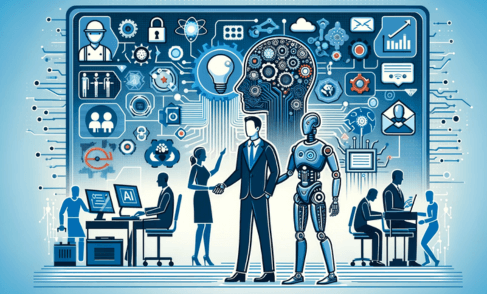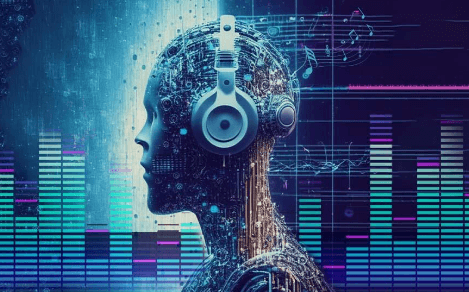How AI Is Improving Cybersecurity Threat Detection

AI is transforming cybersecurity threat detection by enabling systems to analyze vast amounts of data efficiently and identify potential threats with greater precision. Machine learning algorithms detect patterns and anomalies that might otherwise go unnoticed, supporting proactive defense strategies. This technological shift raises important questions about operational reliability, false positives, and the ability to respond swiftly to emerging threats. Exploring these developments reveals how AI’s role is evolving in the ongoing effort to secure digital environments.
Enhancing Threat Detection Through Machine Learning
How can machine learning fundamentally transform threat detection in cybersecurity? AI integration leverages advanced data analytics to identify patterns and anomalies proactively.
Real-Time Monitoring and Automated Response
Building upon advancements in threat detection through machine learning, real-time monitoring and automated response systems significantly enhance an organization’s cybersecurity posture.
These systems leverage behavior analysis and threat hunting to identify anomalies swiftly, enabling proactive mitigation.
Automated responses reduce response times, empowering security teams with immediate insights and intervention capabilities, fostering a resilient and autonomous defense environment.
Identifying Zero-Day Vulnerabilities and Advanced Threats
Identifying zero-day vulnerabilities and advanced threats requires sophisticated analysis techniques capable of detecting novel attack vectors before they cause widespread damage.
Behavioral analysis enables proactive threat hunting by uncovering unusual activity patterns indicative of emerging exploits. This approach empowers security teams to act swiftly, safeguarding digital assets against previously unseen threats and maintaining the integrity of open, resilient systems.
Reducing False Positives and Improving Accuracy
Reducing false positives and enhancing detection accuracy are critical objectives in the deployment of AI-driven cybersecurity solutions. Behavioral analysis and anomaly detection refine AI models, enabling precise differentiation between benign activity and genuine threats.
Proactively minimizing false alarms empowers organizations to focus on genuine risks, fostering a more resilient security environment that preserves operational freedom and mitigates unnecessary disruptions.
AI is fundamentally altering the employment landscape by automating routine tasks and creating new roles. Its integration improves recruitment efficiency through data analytics, while also demanding new skills from workers. These shifts present both opportunities and challenges, raising questions about workforce adaptation and ethical implications. As these trends accelerate, understanding the nuanced impacts of AI on job markets becomes increasingly critical. The evolving dynamics suggest significant changes ahead, warranting closer examination.
The Impact of AI on Employment Opportunities
How has the proliferation of artificial intelligence transformed employment opportunities across various sectors? AI bias risks perpetuating inequalities, while automation accelerates job displacement in manufacturing and services.
Data indicates a dual dynamic: technological advancement offers new roles but also displaces traditional jobs, challenging the pursuit of freedom through adaptable, equitable labor markets.
Transforming Recruitment and Hiring Processes
The integration of artificial intelligence into recruitment and hiring processes has significantly reshaped traditional practices, enabling more efficient and data-driven decision-making.
However, AI bias and automation risks pose challenges, potentially perpetuating discrimination and reducing human oversight.
Despite these issues, AI offers opportunities for transparent, scalable hiring, empowering organizations to refine talent acquisition with greater objectivity and speed.
Evolving Skill Sets and Workforce Development
As AI continues to integrate into various industries, workforce development must adapt by emphasizing new skill sets aligned with technological advancements.
Reskilling initiatives and lifelong learning are essential to ensure workforce agility.
Data indicates that continuous education enhances employability, supporting individuals in navigating automation-driven changes and fostering a flexible, empowered labor market capable of adapting to future innovations.
See also: How AI Is Enhancing Customer Service Across Industries
Challenges and Ethical Considerations in an AI-Driven Job Market
What are the primary ethical and practical challenges posed by the integration of AI into the labor market? Algorithm bias risks marginalizing disadvantaged groups, while privacy concerns threaten individual autonomy.
Addressing these issues requires transparent algorithms and robust data protections, ensuring that AI’s benefits do not compromise fundamental freedoms or perpetuate inequalities in an increasingly automated workforce.
Conclusion
AI acts as a double-edged sword shaping the labor landscape, carving new pathways while eroding traditional roles. Its data-driven insights streamline hiring and elevate skill demands, fostering a dynamic, adaptive workforce. Yet, ethical shadows cast doubt on biases and privacy, demanding vigilant oversight. As AI continues its relentless march, the future of work resembles a complex tapestry—interwoven with innovation and caution—necessitating ongoing adaptation to harness its full potential responsibly.
Conclusion
AI-driven cybersecurity solutions have markedly enhanced threat detection capabilities, with studies indicating a 50% reduction in false positives and a 30% improvement in response times. This technological advancement enables security teams to proactively identify zero-day vulnerabilities and sophisticated attacks, thereby strengthening organizational resilience. As AI continues to evolve, its precise anomaly detection and automated response mechanisms are crucial for maintaining robust defenses in an increasingly complex digital landscape, ensuring organizations stay one step ahead of emerging threats.



